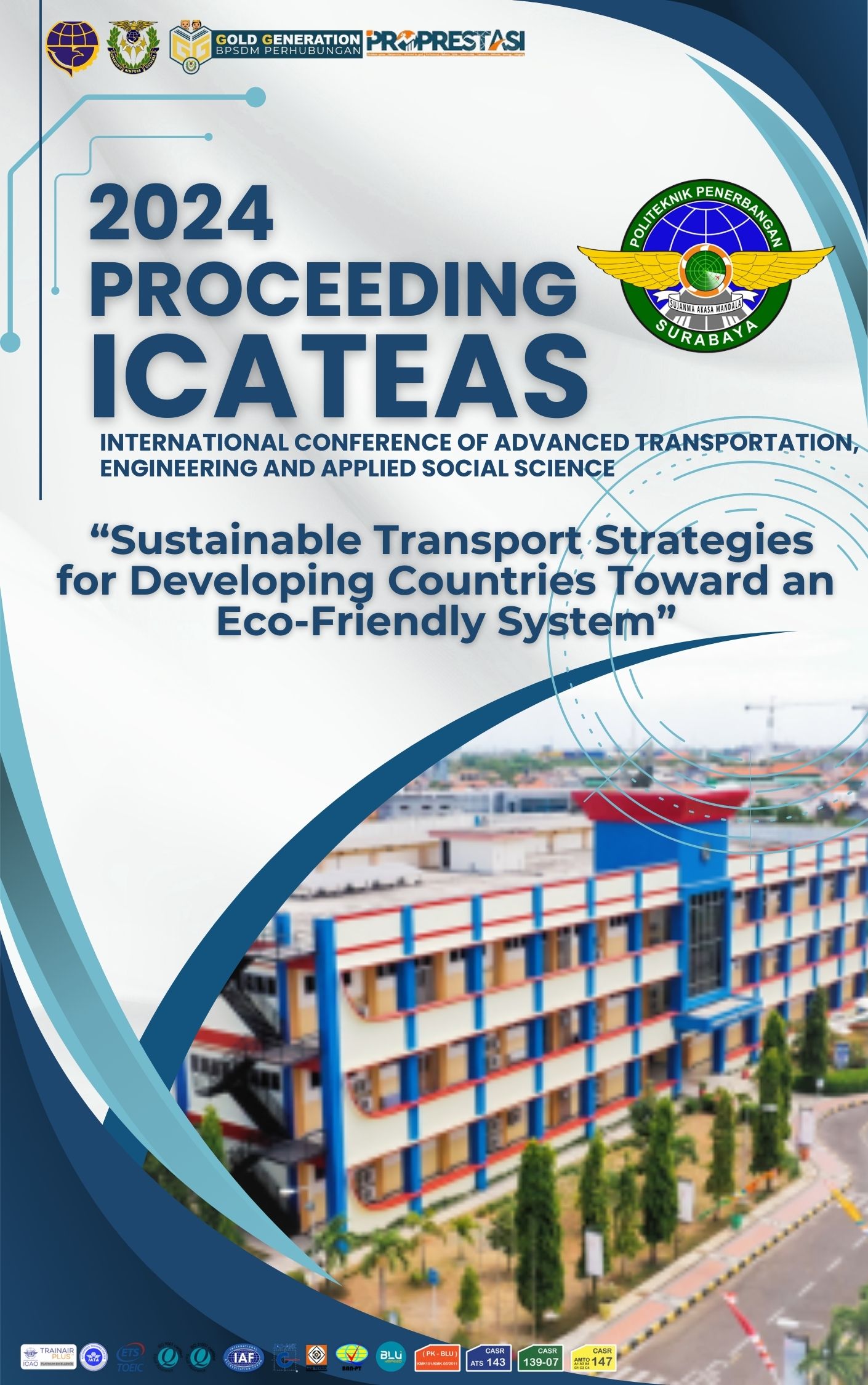THE EFFECT OF AIRCRAFT MOVEMENT OPERATIONS ON OPTIMIZING THE USE OF PARKING STANDS 1 AND 2 AT RADIN INTEN II LAMPUNG INTERNATIONAL AIRPORTS
DOI:
https://doi.org/10.46491/icateas.v3i1.1988Keywords:
Effect, optimization, ground time, block onAbstract
Radin Inten II Lampung International Airport is an airport located in South Lampung, Lampung. This airport is experiencing rapid traffic growth after the Covid-19 pandemic, the increase in the number of aircraft movements must be supported by optimal operational services, one of which is by meeting ground time standards in order to achieve optimal use of parking stands. Ground time is the time of the aircraft while on the apron from block on to block off where during the aircraft on the apron there are ramp service operational activities. The research methodology used in this study is a quantitative descriptive method with data obtained from the linearity test, simple linear regression test, determination coefficient test, and t-test (partial) as well as analysis of observation and documentation results. Data processing was carried out on ground time data to determine the influence of ground time on the use of parking stands in order to achieve optimization of the use of parking stands 1 and 2. The results of the research that have been conducted by the researcher prove that there is an influence of aircraft movement operational activities, namely ground time, on the optimization of the use of parking stands 1 and 2 at Radin Inten II Lampung International Airport. The results of the linearity test show that there is a linear relationship so that it is eligible for a simple linear regression test. From the results of a simple linear regression analysis, it was found that if the ground time variable (X) has a value of zero or fixed, it will increase the utilization rate of parking stands 1 and 2 by 20.619%, if the variable increases by 1 unit, it will decrease the utilization rate of parking stands 1 and 2 by 27.1%. The results of the determination coefficient show that ground time has an effect of 53.9%, while 46.1% cannot be explained by the independent variable in this study. So it can be concluded that H1 is accepted and H0 is rejected. Factors that affect ground time include the unloading and loading process, ramp maintenance, weather, ground handling, apron collapse and FOD, as well as the de-boarding and boarding process.


